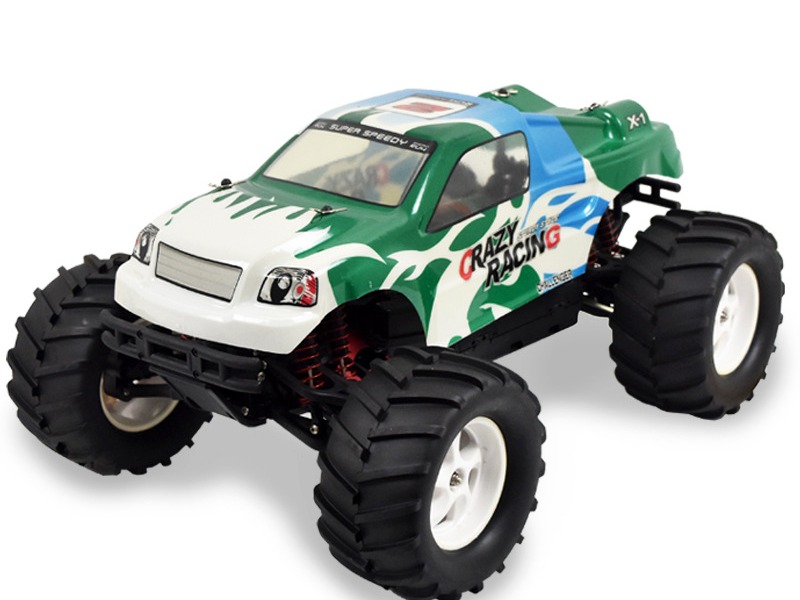How fast do RC cars go?

RC cars, or radio-controlled cars, are miniature vehicles that are powered by electric motors and controlled by a handheld remote. They are popular among hobbyists and are used for racing, stunts, and other recreational activities.
The speed of an RC car depends on several factors, including the type of motor, the size of the car, and the type of battery used. Generally, the faster the motor, the faster the car will go. The size of the car also affects its speed, as larger cars tend to be heavier and slower. The type of battery used also affects the speed of the car, as some batteries are more powerful than others.
The most common type of motor used in RC cars is the brushed motor. Brushed motors are relatively inexpensive and can reach speeds of up to 30 mph. Brushless motors are more powerful and can reach speeds of up to 60 mph.
The size of the car also affects its speed. Smaller cars tend to be lighter and faster, while larger cars are heavier and slower. The type of battery used also affects the speed of the car. NiMH batteries are the most common type of battery used in RC cars and can reach speeds of up to 30 mph. LiPo batteries are more powerful and can reach speeds of up to 60 mph.
In addition to the type of motor and battery used, the type of terrain the car is driven on also affects its speed. RC cars are designed to be driven on flat surfaces, such as asphalt or concrete. Driving on rough terrain, such as dirt or gravel, can reduce the speed of the car.
In general, RC cars can reach speeds of up to 60 mph. However, the actual speed of the car depends on the type of motor, the size of the car, the type of battery used, and the type of terrain the car is driven on. Hobbyists who want to maximize the speed of their RC car should choose a powerful motor, a lightweight car, and a powerful battery.
Comments / Question
1. Upgrade the motor: A more powerful motor can help increase the speed of an RC car.
2. Upgrade the battery: A higher capacity battery can help provide more power for accelerating and can lead to better performance.
3. Upgrade the tires and wheels: Wider tires and larger wheels can provide better traction and more speed.
4. Upgrade the suspension: A more adjustable and higher quality suspension system can help increase stability, speed, and handling.
5. Change the gearing: Changing the gearing ratio can help increase the top speed of an RC car.
6. Upgrade the ESC: A more powerful Electronic Speed Control (ESC) can help control the speed of the motor and allow it to reach higher speeds.
7. Upgrade the aerodynamics: Adding aerodynamic devices such as a spoiler or a diffuser can help reduce drag and help the car reach higher speeds.
1. Always wear protective gear such as helmets, goggles, and gloves.
2. Be aware of your surroundings and watch for other vehicles and people.
3. Ensure that the car is in good working condition and all parts are secure before use.
4. Practice using the car in a safe area and at a low speed before attempting high-speed operation.
5. Check the area for obstacles and hazards before driving.
6. Keep all batteries and electronic components away from water and heat sources.
7. Read and follow all instructions provided with the car.
2. Motor power: The motor power (measured in watts or KV) of the car determines the power output it is able to generate. In general, the higher the motor power, the faster the car will be able to go.
3. Gear ratio: The gear ratio of the car affects its speed and acceleration. Higher gear ratios will make the car faster, while lower ratios will decrease speed.
4. Car weight: The weight of the car also affects the speed. Heavier cars are typically slower, while lighter cars are generally faster.
5. Track surface: The surface of the track will also affect the speed of the car. Smooth surfaces will provide the most traction and allow for higher speeds.
6. Air resistance: The higher the air resistance, the slower an RC car will be able to go. Windy conditions can make the car slower, while windy conditions can make the car faster.

